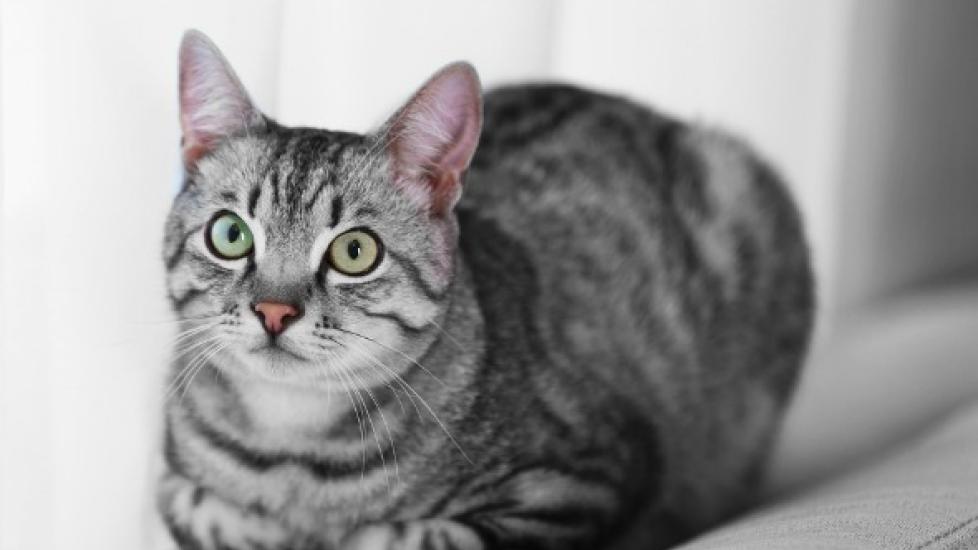Nerve Disorder Affecting Multiple Nerves in Cats
Peripheral Neuropathy (Polyneuropathies) in Cats
Unlike the central nervous system, which has the vertebrae of the spine, and the bone of the skull to protect it, the peripheral nerves are more exposed to the elements that enter into the body and come into contact with the body, so they are more susceptible to physical injury and toxic damage. The peripheral nerves are spread over the entire body. They are made up of the motor, sensory, autonomic, and/or cranial nerves, and are responsible for conscious, coordinated movement (somatic), for automatic physical responses (autonomic), and for the movement of the digestive system (enteric).
Polyneuropathy is a nerve disorder that affects multiple peripheral nerves. Peripheral in this case refers to the nerves that are outside of the central nervous system.
Symptoms and Types
- Motor and sensorimotor nerve disorders (automatic movement):
- Weakness or paralysis in all four legs
- Weak reflexes, or lack of reflexes (automatic physical responses)
- Weak to no muscle tone
- Muscle deterioration (atrophy)
- Muscle tremors, trembling
- Sensory nerve disorders (pain/pleasure nerve receptors):
- Spatial disorientation (inability to judge the space around oneself)
- Weakness to loss of consciousness
- No muscle deterioration
- No muscle tremors
- Under-active thyroid gland
- Paralysis of the voice box
- Paralysis of the throat/esophagus, affects ability to eat and drink
- Facial paralysis
- Dizziness, instability
- Dysfunctioning autonomic nervous system (not under conscious control) :
- Dry nose
- Dry mouth
- Dry eyes - low tear production
- Slow heart beat rate
- Lack of an anal reflex
- Primary feline hyperchylomicronemia:
- excess levels of chylomicron and triglycerides (fat particles) in the blood
- Nodules/lumps made up of lipid (fats and oils) masses, found under the skin, and/or in the abdomen
- Primary hyperoxaluria (a congenital disease of the kidneys in cats):
- Excessive oxalate is a naturally occurring salt that filters through the body as a digestive end product, but when combined with calcium, it hardens and forms into stones and solid deposits within the body, especially the kidney. Kidneys are enlarged, and painfully sensitive. Prognosis for this particular condition is poor
Causes
Myelin, the white, fatty, lipid material that acts as an insulator coat (also called a sheath) for some nerve fibers, can be lost through demyelination, a condition that causes the myelin to deteriorate, resulting in electrical signals in the nerves being lost, and impairing function. Or, there may be axonal degeneration with secondary demyelination. Axonal degeneration occurs when the actual nerve fibers deteriorate within the myelin sheath. Other possible causes are listed:
- Congenital/inherited
- Dysautonomia: abnormal functioning of the autonomic nervous system, which causes excessive body fluid output, lack of reflexes, and lack of coordination
- Immune-disease
- Metabolic disease
- Diabetes mellitus
- Hypothyroidism (under-active thyroid gland)
- A tumor in the pancreas, the gland that produces insulin
- Infectious
- FeLV (Feline Leukemia Virus): affects cats and is infectious to other cats only
- Cancer medications
- Toxins
- Thallium: used in rodent poison
- Organophosphates: used in fertilizers and pesticides
- Carbon Tetrachloride: used in insecticides
- Lindane: used for killing weeds, insects, and lice
Diagnosis
Your veterinarian will perform a thorough physical exam on your cat, taking into account the background history of symptoms and possible incidents that might have precipitated this condition. A chemical blood profile, a complete blood count, an electrolyte panel, and a urinalysis will be used for confirming, or for ruling out any underlying diseases. Your veterinarian may also opt to perform additional blood tests, and a spinal tap, to look for specific disorders.
Chest and abdominal x-rays can be crucial for diagnosing visible peripheral polyneuropathies. X-ray and ultrasound imaging can help to rule out (or confirm) cancer, but the most important diagnostic tool for identifying peripheral neuropathies is electrophysiology – measuring the electrical flow of the body's tissues and cells. An analysis of tissue sample (biopsy) from the muscles or peripheral nerves can provide further information about the disease process your cat is experiencing.
Treatment
Animals can usually be treated on an outpatient basis. However, cats with acute polyradiculoneuropathies will have inflammation at the roots of the spinal cord nerves, and are at risk of respiratory failure. They should be hospitalized for observation in the early phase of the disease to prevent this. Cats with dysautonomia should be hospitalized to receive fluid therapy and/or administered (parenteral) feeding.
Cats with hyperchylomicronemia may spontaneously recover after two to three months of being fed a low-fat diet. Cats that have been diagnosed with diabetes mellitus should have their blood glucose and diet closely monitored.
An excellent related treatment for patients with peripheral polyneuropathies is physiotherapy, for encouraging restoration of the affected musculature and nerve memory.
Living and Management
It is important to understand that the cause of many polyneuropathies can never be determined, and treatment of the primary cause of polyneuropathy may not cure your cat. In some cases, the peripheral nerves will continue to deteriorate, and your cat's disease will worsen.
Cats that have been diagnosed with congenital or inherited forms of polyneuropathies should not be bred. Generally, it is advisable to neuter a cat that is suffering from this condition to prevent accidental breeding.
Help us make PetMD better
Was this article helpful?
